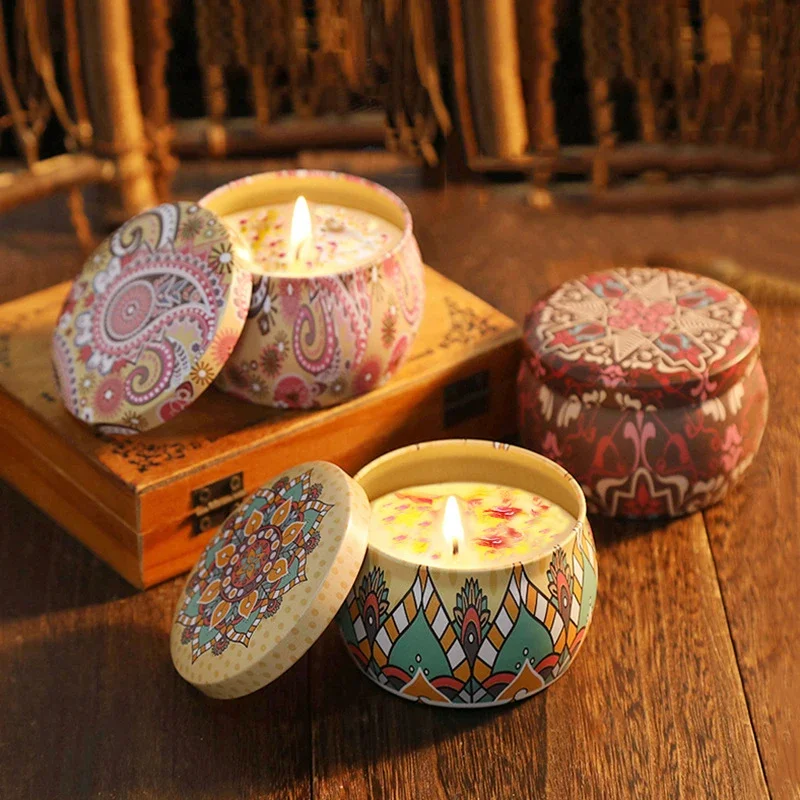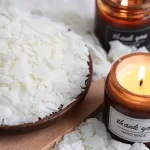Candles have been integral to human culture for millennia, serving as both a source of light and an object of beauty. With their soft glow and inviting aromas, they have a remarkable ability to create ambiance, elevate moods, and even foster connection. But have you ever stopped to consider how they work and what makes them so captivating? This article explores the science behind candles, their history, and the psychological effects they have on us.
A Brief History of Candles
The story of candles is as old as civilization itself. The earliest recorded use of candles dates back to ancient Egypt around 3,000 BC, where rushlights (torches made from reeds soaked in animal fat) were popular. However, the first true candles, made from beeswax, appeared in ancient Rome. These early iterations were often used for religious ceremonies, symbolizing light in the darkness.
Throughout history, candle-making techniques evolved significantly. In the Middle Ages, tallow, or animal fat, became the common material for candles, but it had a foul odor and produced soot when burned. This led to the rise of beeswax candles, which were much cleaner and more fragrant. The invention of the candle mold in the 19th century modernized the industry further, allowing for mass production. Today, candles come in various shapes, sizes, and scents, reflecting their enduring popularity and versatility.
Understanding the historical context of candles sheds light on their social significance. They have transcended their mere utility to become items of status, comfort, and even romance.

The Composition of Candles
At their core, candles consist of three primary components: wax, wick, and fragrance. Understanding the chemistry behind these elements is crucial to grasping how candles produce light and scent.
Wax: The Fuel Source
The wax serves as the primary fuel source for a candle. Different types of wax can be used, including paraffin, soy, beeswax, and palm wax. Paraffin, derived from petroleum, is often the most affordable and common. However, soy wax has gained popularity due to its renewable nature and clean burn characteristics. Beeswax is often considered the gold standard for its purifying properties and natural honey scent.
When a candle is lit, the heat from the flame melts the wax near the wick, turning it into liquid. This molten wax is then drawn up the wick by capillary action, where it vaporizes and combusts in the flame. Understanding the chemical properties of these waxes can enhance your candle experience. For instance, beeswax burns longer and emits negative ions that can purify the air, while soy wax tends to hold scent better than paraffin.
Wick: The Conductor
The wick plays a vital role in candle performance. It’s typically made of braided cotton or a cotton-paper blend and is coated in a wax or treatment to facilitate burning. The diameter and length of the wick affect the candle’s burn rate and how well it draws the melted wax.
When lit, the wick absorbs the liquid wax, enabling it to burn steadily. If the wick is too large, it may burn too hot, leading to excessive soot or a quick burn. Conversely, a too-small wick can result in a weak flame and insufficient scent throw. The science of wicks illustrates how delicate the balance is when creating the perfect candle.
Fragrance: The Allure of Scents
Fragrance plays an essential role in elevating the candle experience, turning a simple light source into a multi-sensory delight. Candles can incorporate synthetically produced fragrances or essential oils derived from plants. The choice of ingredients not only affects the scent profile but also the candle’s burning properties.
Fragrance molecules vaporize at different rates, influencing how well a scent fills a space. High-quality candles can infuse a room with their unique aromas, while lower-quality options might provide an underwhelming experience. Understanding how fragrance interacts with wax can help consumers choose candles that will meet their sensory expectations.
The Physics of Candle Flames
The science of candles is not just about materials; it also involves the physics of combustion. When you light a candle, you initiate a chain reaction of chemical processes. The flame itself is a symbol of transformation, where solid wax turns into liquid and then gas, ultimately producing light and heat.
Combustion: An Exothermic Reaction
The burning candle undergoes an exothermic reaction, meaning it releases energy in the form of heat and light. When the wick’s heat vaporizes the wax, the vaporized molecules react with oxygen in the air, producing carbon dioxide and water vapor. In a well-ventilated area, this process is efficient and leaves minimal residue. However, poor ventilation can result in incomplete combustion, producing soot and other byproducts.
The Role of Oxygen
Every flame requires oxygen, which is drawn from the surrounding environment. A candle flame needs a balanced ratio of wax vapor, heat, and oxygen to sustain itself. This balance explains why extinguishing a candle can cause the remaining wax to cool rapidly. In low-oxygen settings, you’ll observe the flame flickering erratically as it struggles to maintain the necessary combustion conditions.

The Psychological Appeal of Candles
Beyond their physical characteristics, candles hold a profound psychological appeal. They can evoke emotions, set the mood, and even trigger memories. This phenomenon can be attributed to the interplay of light, scent, and ambiance.
Emotional Resonance
Lighting a candle often signifies a moment of pause, reflection, or celebration. The act of lighting a candle can take on ritualistic and spiritual significance. For many, it becomes a form of self-care, providing a sense of comfort and tranquility. The warm glow can act as a safety signal—something soothing in an otherwise chaotic world.
Memory Triggers
The human brain is wired to associate particular scents with memories. When we encounter familiar fragrances, such as vanilla or cinnamon, the olfactory bulb—a part of the brain responsible for smell—transmits signals to the limbic system, where emotions and memories are processed. A simple whiff of a candle can transport you back in time, invoking feelings of nostalgia and warmth.
The Modern Candle Industry
Candles have experienced a renaissance in recent years, evolving into a diverse and curated market. From artisanal brands to mass-market products, the variety is astounding.
Craftsmanship and Artistry
The rise of independent candle makers has brought new artistry and craftsmanship to the forefront. Many artisans focus on high-quality ingredients, complex scent combinations, and aesthetically pleasing designs. The art of candle-making has become a canvas for creative expression, resulting in everything from eco-friendly soy candles to luxury beeswax options.
Trendy Scent Profiles
Additionally, more nuanced scent profiles have emerged in recent years, combining multiple layers of fragrance notes to create multi-dimensional experiences. Scents can range from earthy and woody to sweet and floral, catering to a wide range of personal preferences. Seasonal scents have also soared in popularity, allowing for a sense of celebration and festivity throughout the year.

Candles in Rituals and Celebrations
Throughout various cultures, candles have played a significant role in rituals and celebrations. They often symbolize cleansing, hope, and light, marking important life events and changes.
Religious Significance
In many religious traditions, candles represent divinity and the presence of a higher power. Lighting a candle in a church or during prayer can create a sacred atmosphere that fosters a sense of reverence and community. In many cultures, special ceremonies often incorporate candles to represent light overcoming darkness, symbolizing faith and hope.
Life Celebrations
From birthdays to wedding receptions, candles mark significant life milestones. The act of blowing out a birthday candle is a rite of passage, often considered a moment to reflect on personal growth and set intentions for the coming year. Similarly, wedding ceremonies frequently incorporate candles to symbolize unity and the light that love brings into one’s life.
Conclusion: The Timeless Allure of Candles
From their ancient origins to modern-day significance, candles have proven their worth across cultures, ceremonies, and everyday life. Their simple yet profound ability to illuminate, scent, and evoke emotion makes them a cherished staple in many households.
As science deepens our understanding of how they work, we continue to appreciate the mysteries they embody. Whether for relaxation, celebration, or spiritual connection, candles have remained timeless icons of warmth, beauty, and light.


